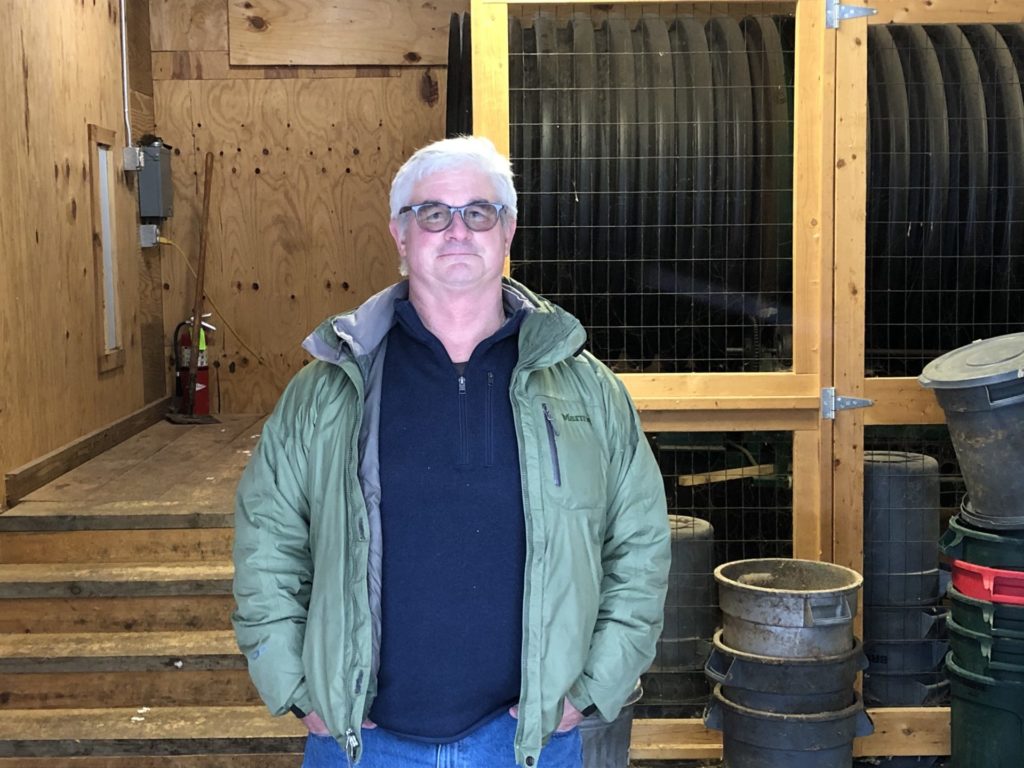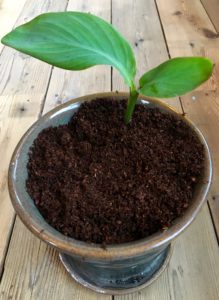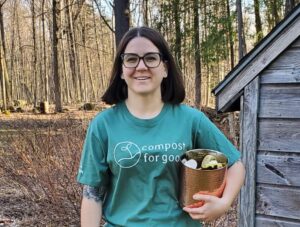Author: John Culpepper, Compost for Good
Somewhere in my education I remember one of my teachers citing a reference for the value of chemicals in a human body. Not long ago I tried to dredge up that factoid, but I’m afraid that it is lost, like probably 90% of the rest of the information that diligent teachers tried to impress upon me during my education. Because this intriguing fact continued to bother me, I decided to see what I could find out.

According to my initial research, my body contains anywhere from $1 to $160 worth of chemicals. For argument’s sake, let’s call it $81 worth of chemicals. Good luck to my loved ones if they try to recoup that money after my passing.
That got me wondering if there is a different way to think about the value of chemicals in a human body. For example, what is the value of chemicals each one of us excretes over a lifetime?
Human urine (referred to as just urine in the rest of this article) has been gaining recognition in the organic recycling world as a valuable plant fertilizer. The Rich Earth Institute in Brattleboro, Vermont is one non-profit organization that is working with a variety of universities and regulatory agencies to research how urine can be safely and efficiently used in agriculture.
The Rich Earth Institute found that the urine from one adult over one year can provide enough fertilizer to grow 320 pounds of wheat. One years’ worth of urine could fertilize all of the food that one adult needs in that year. This is not surprising when you realize that we co-evolved with other living systems to require only the nutrients that are produced where you live. Many people around the world have known this for centuries, and have grown their sustenance with no purchased fertilizers. Some of us are just rediscovering this basic idea.
In the US, our urine collectively could displace 9 billion pounds of chemical fertilizer. Doing so would reduce the impact of processing all that urine in the thousands of private and wastewater treatment plants. I have nothing against modern wastewater treatment systems—communities all over the world have benefited from these systems. However, in a cost benefit analysis, the financial and environmental costs associated with these systems can be high.
Back to my initial question: could I calculate the value of the chemical components excreted in one person’s urine over a lifetime?
Urine contains three major nutrients as well as many micronutrients that plants need to thrive. For my calculation, I decided to focus on the nutrient that tends to be the least available in many gardens, farms, and forests—nitrogen.
To start, I looked up data for the amount of urine produced by an adult in one year: 125 gallons. The average lifespan of a person (in the US) is 79 years. That means that if I lived an average lifespan, I would produce about 9,875 gallons of urine. Capturing all of that urine would yield approximately 1,086 pounds of nitrogen. Using 2020 calculations from the good folks at “The Progressive Farmer,” that amounts to $435 of nitrogen fertilizer over a lifetime.
Research is continually finding ways to upcycle urine, adding value. One research group is using advanced technology to turn urine into a solid fertilizer called struvite, as noted in the academic article, “Effectiveness of struvite precipitation and ammonia stripping for recovery of phosphorus and nitrogen from anaerobic digestate: a systematic review.” (Recreational reading only for nerds like me.) Based on my calculations, a lifetime of urine turned into struvite would yield approximately $93.50.
However, adding value to urine does not need to be complicated. At the Rich Earth Institute, they work with people in the town of Brattleboro to donate their urine, and with area farmers to do research trials on the use of urine. The collected urine is simply pasteurized, diluted with water, then applied to fields and research plots. Their research has shown that the liquid fertilizer is safe and effective.
I suggest that there is yet a better way, a way that not only adds value to urine, but also adds a vital additional ingredient to soils—organic matter. Increasing organic matter allows soils to hold more water and nutrients, makes it easier for plant roots to grow down into the soil, and can actually turn soils into a carbon sink, instead of a carbon emitter.

At Compost for Good we have successfully demonstrated that urine can be turned into a high value compost safely and effectively, merely by adding sawdust and water to urine in the right proportions, and
making sure that the mix is aerated periodically. Done properly, the finished compost qualifies for the US EPA’s Class-A biosolids compost with no restrictions on use. (Remarkably, based on the wide network of researchers that I’m involved with, it seems that we are the only ones who have done this.) You can learn more about our process here.
In our latest experiment, we turned 140 gallons of urine into 2 cubic yards of finished compost, or $464 based on current average US compost prices. This includes the price that we paid for the commercial wood pellets that we used for sawdust, but not the labor, which was minimal. Based on my calculations, a lifetime of urine turned into compost by this method would yield over $32,000.
Is anyone going to be able to capitalize on collecting their urine through a lifetime? Probably not. But it is worth considering as we develop future plumbing systems that collect undiluted urine, where entrepreneurs could turn that urine into compost for profit, benefitting agricultural systems and the environment.
I would be embarrassed to admit to family and friends how much time I devoted to the research for this short article. However, I did benefit from some fun facts along the way. For example: did you know that men pee faster than women until age 50, when women take the lead? I did not.
Attempting to quantify the value of so-called “waste” produced by our bodies over a lifetime is fraught with assumptions. No doubt other researchers may challenge the calculations by which I arrived at the conclusions above (which in science is always a good thing). However, at this point in time I stand by my calculations as a worthwhile thought experiment, as we at Compost for Good continue to reimagine the potential of urine and other “wastes” as a resource.





